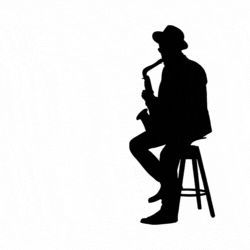
Your shopping cart is currently empty.
When a Schilke Standard Series mouthpiece has a standard backbore, rim and cup, only the cup diameter (first number) is shown on the mouthpiece to designate the model number. For example, in the case of the model #14 trumpet mouthpiece, it is only necessary to identify the mouthpiece with the first number because it has a standard ‘C’ cup, standard ‘3’ rim and standard ‘c’ backbore. It could be cataloged as 14C3c but the nomenclature was dropped, since the remaining variables are standard. The model 14A4a has a shallower ‘A’ cup, flatter ‘4’ rim shape, and a tighter ‘a’ backbore than the #14 model.

Regarding the Schilke mouthpiece numbering system,
using the model 14A4a as an example:
14 refers to “Cup Diameter”
Smallest numbers have the smallest diameters.
Diameter size increases as the number increases.
A refers to “Cup Volume”
A. Small – shallow
B. Medium small
C. Standard (medium size)
D. Medium Large
E. Large
4 refers to “Rim Contour”
1. Roundest
2. Semi-Round
3. Standard
4. Semi-flat
5. Flattest
a refers to “Backbore”
a. Tight, focused
b. Semi-tight; slightly more open than “a” backbore
c. Standard
d. Medium Large; slightly curved out
x. Large; for piccolo trumpet
z. Extra-tight
CUP DIAMETER (First number in label – 14A4a)
The first number (i.e. “14”) refers to the cup diameter; smaller numbers have smaller diameters. Cup diameters increase as the model number increases.
Most trumpet and cornet mouthpieces have a cup diameter that falls between .600 inch and .725 inch. Nos. 5 to 24 in the Schilke system represents sections of .005 inches each between these two measurements. This is also referred to as inner diameter (id).
Cup diameter or inner rim diameter is the most common way players compare one mouthpiece to another. It is individual choice determined by a player’s embouchure, experience, strength, instrument, personal playing style or musical prerequisites. Generally, a small diameter may improve the upper register and endurance but resonance and volume may be affected. A narrow diameter may produce a strained sound without focus and control if a player needs more room. A larger diameter allows the player to “vibrate” a larger surface area of the lip into the bowl of the mouthpiece thus providing more sound volume and depth of sound. However, this may affect endurance and require more strength to maintain a balanced sound in all registers.
CUP VOLUME (First letter in label – 14A4a)
The first letter or second character (i.e. “A”) refers to the cup volume, which is classified as a shallow volume cup shape. It is dropped from the model name if it is the standard ‘C’ cup shape and all remaining variables are standard.
A = Small cup – most shallow
B = Medium small
C = Standard (medium size)
D = Medium large
E = Large
Cup volume helps determine tone quality, tone color, and intonation. In general, deep cup mouthpieces produce the darkest sounds with more core and less highs in the sound. In reverse, shallow cup mouthpieces produce the brightest sounds with more high overtones present in the sound. This aids in the production of the high register. The standard Schilke “C” cup is a compromise, which offers both full tone and ease of sound production. Resistance is also affected by cup volume. A shallow cup offers more resistance to the player. Conversely, a deeper cup offers less resistance or more freedom.
RIM CONTOUR (Second number in label – 14A4a)
The second number or third character (i.e. “4”) refers to the rim contour of the mouthpiece, which classifies it as a semi-flat rim contour.
1 = Roundest
2 = Semi-round
3 = Standard
4 = Semi-flat
5 = Flattest
The rim is the connection between the player’s body and the instrument. This is critical because it is what you “feel” as the player and it is what creates the seal. The “thickness” of the rim or “bite” of the inner diameter can greatly affect response and articulation clarity. Generally, a rounder rim will allow greater flexibility but sometimes tires the player sooner. The location of the high point of the rim contour may change the way a player perceives the cup width. A flat rim often feels the most comfortable but tends to hold the lips in a fixed position, thereby reducing flexibility.
The #3 standard Schilke rim has the feel that most players prefer in a rim. It has a flat enough contour to distribute the slight pressure needed to provide an air seal but is rounded slightly to offer increased flexibility. The flatter #4 rim provides cushion and comfort in the upper register.
BACKBORE (Second letter in label – 14A4a)
The second (last) letter or fourth character (i.e. “a”) refers to the backbore, which classifies it as a tight tapered backbore.
a = Tight
b = Semi-tight
c = Standard
d = Medium Large
x = Large; for Piccolo Trumpet
z = Extra-tight
The backbore describes the taper or rate of change inside the mouthpiece stem following the throat as it opens into the mouthpipe. As an extension of the instrument’s mouthpipe, the backbore shape plays a significant role in sound color, tone quality, intonation and resistance. A tighter tapered backbore offers more brilliance and control while providing more resistance. This generally will assist a player in the upper register. If the backbore is too small, the resulting sound is “stuffy” and lacking resonance. A large backbore offers a darker, thicker sound with more depth and volume but with less resistance. If there is not sufficient backbore resistance, the resulting sound is harder to control and intonation is less stable with the upper register being slighter sharper.
Most Schilke mouthpieces come with standard backbores (“c”), which permit the maximum in tone and range. Other backbores are available (a, b, d, x, z) which may suit a particular need depending on the type of sound required.